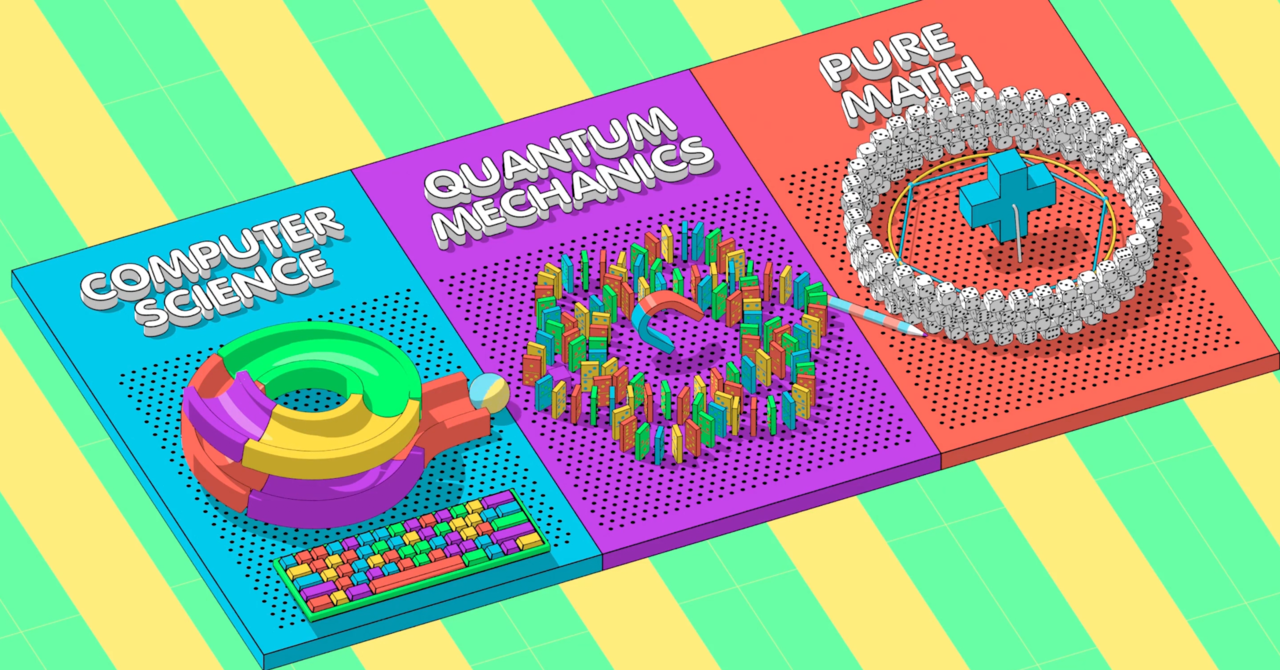In 1935, Albert Einstein, working with Boris Podolsky and Nathan Rosen, grappled with a possibility revealed by the new laws of quantum physics: that two particles could be entangled, or correlated, even across vast distances.
Original story reprinted with permission from Quanta Magazine, an editorially independent publication of the Simons Foundation whose mission is to enhance public understanding of science by covering research developments and trends in mathematics and the physical and life sciences.
The very next year, Alan Turing formulated the first general theory of computing and proved that there exists a problem that computers will never be able to solve.
These two ideas revolutionized their respective disciplines. They also seemed to have nothing to do with each other. But now a landmark proof has combined them while solving a raft of open problems in computer science, physics, and mathematics.
The new proof establishes that quantum computers that calculate with entangled quantum bits or qubits, rather than classical 1s and 0s, can theoretically be used to verify answers to an incredibly vast set of problems. The correspondence between entanglement and computing came as a jolt to many researchers.
“It was a complete surprise,” said Miguel Navascués, who studies quantum physics at the Institute for Quantum Optics and Quantum Information in Vienna.
The proof’s co-authors set out to determine the limits of an approach to verifying answers to computational problems. That approach involves entanglement. By finding that limit the researchers ended up settling two other questions almost as a byproduct: Tsirelson’s problem in physics, about how to mathematically model entanglement, and a related problem in pure mathematics called the Connes embedding conjecture.
In the end, the results cascaded like dominoes.
“The ideas all came from the same time. It’s neat that they come back together again in this dramatic way,” said Henry Yuen of the University of Toronto and an author of the proof, along with Zhengfeng Ji of the University of Technology Sydney, Anand Natarajan and Thomas Vidick of the California Institute of Technology, and John Wright of the University of Texas, Austin. The five researchers are all computer scientists.
Undecidable Problems
Turing defined a basic framework for thinking about computation before computers really existed. In nearly the same breath, he showed that there was a certain problem computers were provably incapable of addressing. It has to do with whether a program ever stops.
Typically, computer programs receive inputs and produce outputs. But sometimes they get stuck in infinite loops and spin their wheels forever. When that happens at home, there’s only one thing left to do.
“You have to manually kill the program. Just cut it off,” Yuen said.
Turing proved that there’s no all-purpose algorithm that can determine whether a computer program will halt or run forever. You have to run the program to find out.
“You’ve waited a million years and a program hasn’t halted. Do you just need to wait 2 million years? There’s no way of telling,” said William Slofstra, a mathematician at the University of Waterloo.
In technical terms, Turing proved that this halting problem is undecidable — even the most powerful computer imaginable couldn’t solve it.
After Turing, computer scientists began to classify other problems by their difficulty. Harder problems require more computational resources to solve — more running time, more memory. This is the study of computational complexity.
Ultimately, every problem presents two big questions: “How hard is it to solve?” and “How hard is it to verify that an answer is correct?”
Interrogate to Verify
When problems are relatively simple, you can check the answer yourself. But when they get more complicated, even checking an answer can be an overwhelming task. However, in 1985 computer scientists realized it’s possible to develop confidence that an answer is correct even when you can’t confirm it yourself.
The method follows the logic of a police interrogation.
If a suspect tells an elaborate story, maybe you can’t go out into the world to confirm every detail. But by asking the right questions, you can catch your suspect in a lie or develop confidence that the story checks out.
In computer science terms, the two parties in an interrogation are a powerful computer that proposes a solution to a problem—known as the prover—and a less powerful computer that wants to ask the prover questions to determine whether the answer is correct. This second computer is called the verifier.
To take a simple example, imagine you’re colorblind and someone else—the prover—claims two marbles are different colors. You can’t check this claim by yourself, but through clever interrogation you can still determine whether it’s true.
Put the two marbles behind your back and mix them up. Then ask the prover to tell you which is which. If they really are different colors, the prover should answer the question correctly every time. If the marbles are actually the same color—meaning they look identical—the prover will guess wrong half the time.
“If I see you succeed a lot more than half t

